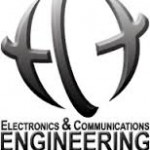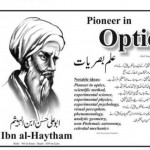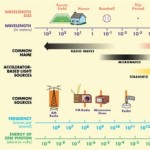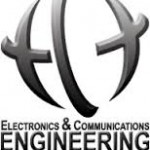- This topic has 20 replies, 12 voices, and was last updated 7 years, 10 months ago by
 Naazira Badar.
Naazira Badar.
-
AuthorPosts
-
-
January 1, 1970 at 12:00 am #81049
 Geneva BottomleyMember
Geneva BottomleyMember(Awaiting moderation)
-
January 1, 1970 at 12:00 am #83653
 Geneva BottomleyMember
Geneva BottomleyMember(Awaiting moderation)
-
February 4, 2016 at 4:58 am #29442
 K. Esakki MuthuParticipant
K. Esakki MuthuParticipantDear All,
Can anyone please tell me the difference between FSO and OWC?
Thanks in Advance
-
February 4, 2016 at 5:54 am #29444
 prakash jatParticipant
prakash jatParticipanthi esakkimuthu
Optical wireless communications (OWC) is a form of optical communication in which unguided visible, infrared (IR), or ultraviolet (UV) light is used to carry a signal while Free-space optical communication (FSO) is an optical communication technology that uses light propagating in free space to wirelessly transmit data for telecommunications [ source- wikipedia].i hope you wil observe the spectrum of optical signal. & owc seems to be parent and fso as child
but todays both are used interchangebly-
February 4, 2016 at 7:17 am #29447
Alessandro Festa
ParticipantSo if I understand correctly FSO is a particular case of OWC where visible light is used?
-
-
February 4, 2016 at 8:29 am #29451
 prakash jatParticipant
prakash jatParticipantsorry festa
visible means .4 um to .7um which is the case of owc
and fso means 850nm or 1040nm or 1550nm because on that wavelenth attenuation spectrum is low
and finally owc include uv, ir visible ,fso or broadly fso is the biggest part of owc
let me know if i am wrong-
February 4, 2016 at 9:15 am #29452
Alessandro Festa
ParticipantOk I am not an expert at all so I was asking…so FSO and OWC distinction is not based on the transmitted wavelength?
-
February 4, 2016 at 7:43 pm #29460
 alistuParticipant
alistuParticipantHi Alessandro,
Their difference can be understood from their terminology the way Prakash kindly mentioned in his first comment. One is used in free space and one not (otherwise, both are optical and both are wireless). My perception is that the wavelengths are adopted only to suit the purpose for each of these two branches of optical communications.
Regards
-
February 5, 2016 at 2:03 am #29461
Alessandro Festa
ParticipantHi Alitsu, thank you very much for your clarification!
Best Regards,
Alessandro
-
February 5, 2016 at 3:24 am #29470
 alistuParticipant
alistuParticipantYou’re welcome Alessandro.
Regards
-
-
-
March 8, 2016 at 12:15 am #31818
 Ranjeet KumarParticipant
Ranjeet KumarParticipanthi,
Optical wireless communications (OWC) is a form of optical communication in which unguided visible, infrared (IR), or ultraviolet (UV) light is used to carry a signal. OWC systems operating in the visible band (390–750 nm) are commonly referred to as visible light communication (VLC).
FSO technology is surprisingly simple. It’s based on connectivity between FSO-based optical wireless units, each consisting of an optical transceiver with a transmitter and a receiver to provide full-duplex (bi-directional) capability. Each optical wireless unit uses an optical source, plus a lens or telescope that transmits light through the atmosphere to another lens receiving the information. At this point, the receiving lens or telescope connects to a high-sensitivity receiver via optical fiber. This FSO technology approach has a number of advantages: Requires no RF spectrum licensing. Is easily upgradeable, and its open interfaces support equipment from a variety of vendors, which helps enterprises and service providers protect their investment in embedded telecommunications infrastructures. Requires no security software upgrades. Is immune to radio frequency interference or saturation. Can be deployed behind windows, eliminating the need for costly rooftop rights.-
March 8, 2016 at 1:52 am #31833
 Aabid BabaParticipant
Aabid BabaParticipantHi reanjeet,
very well explained. (y)
-
-
April 28, 2016 at 8:55 pm #38621
 Rajguru M. MohanParticipant
Rajguru M. MohanParticipantHi,
Free Space Optics (FSO) communications, also called Free Space Photonics (FSP) or Optical Wireless, refers to the transmission of modulated visible or infrared (IR) beams through the atmosphere to obtain optical communications. Like fiber, Free Space Optics (FSO) uses lasers to transmit data, but instead of enclosing the data stream in a glass fiber, it is transmitted through the air. Free Space Optics (FSO) transmits invisible, eye-safe light beams from one “telescope” to another using low power infrared lasers in the teraHertz spectrum. The beams of light in Free Space Optics (FSO) systems are transmitted by laser light focused on highly sensitive photon detector receivers. These receivers are telescopic lenses able to collect the photon stream and transmit digital data containing a mix of Internet messages, video images, radio signals or computer files.
Optical wireless communication -in the infrared and visible range – is an attractive solution, especially in environment settings where radio communication encounters difficulties. The Fraunhofer Heinrich Hertz Institute HHI applies modern transmission techniques that enable data-rates up to 1,25 Gbit/s. LED-lamps, normally used for lighting purposes, simultaneously transmit data, even when mobile terminals are not aligned with the access point.Thanks,
-
April 28, 2016 at 8:58 pm #38622
 Rajguru M. MohanParticipant
Rajguru M. MohanParticipantHi,
I also want to discuss various challenges, its features and benefits of Optical Wireless Communication:
ChallengesSimple optical frontends, off-the-shelf components and standard interfaces
Robust communication without transceiver alignment, i.e. no pointing and tracking
Optimization of optical senders and receivers for high bandwidth, high linearity and high signal-to-noise ratios
Spectrally efficient modulation for high data throughput
Support of multi-user communicationFeatures and Benefits
No electromagnetic interference (EMI) with radio systems
Unregulated spectrum (optical frequencies) with worldwide availability
Simple shielding by opaque surfaces (improved privacy)Thanks,
-
April 29, 2016 at 11:15 pm #38660
 Hamza Ali Abbas KhanParticipant
Hamza Ali Abbas KhanParticipantHi All
Optical wireless communication (OWC) enables wireless connectivity using infrared, visible or ultraviolet bands. With its powerful features such as high bandwidth, low cost and operation in an unregulated spectrum, OWC can be, in some applications, a powerful alternative to and, in others, complementary to the existing wireless technologies. It is one of the most promising current areas of research with significant potentials for high-impact results which will considerably change the wireless market mostly dominated by the radio frequency (RF) technologies.
While as free space optics systems are the terrestrial point-to-point OWC systems, alsoknown as the free space optical (FSO) systems, operate at the near IR frequencies (750 – 1600 nm). These systems typically use laser transmitters and offer a cost-effective protocol-transparent link with high data rates, i.e., 10 Gbps per wavelength, and provide a potential solution for the backhaul bottleneck.I hope you would agree to it.
Thanks -
April 30, 2016 at 12:50 pm #38690
 umer ashraf waniParticipant
umer ashraf waniParticipant -
May 1, 2016 at 4:44 am #38694
 Rajguru M. MohanParticipant
Rajguru M. MohanParticipantHi,
As, FSO is a line-of-sight technology that uses invisible beams of light to provide optical bandwidth connections that can send and receive voice, video, and data information.
In today’s, FSO technology — the foundation of Light Pointe’s optical wireless offerings — has enabled the development of a new category of outdoor wireless products that can transmit voice, data, and video at bandwidths up to 1.25 Gbps.
This optical connectivity doesn’t require expensive fiber-optic cable or securing spectrum licenses for radio frequency (RF) solutions. FSO technology requires light. The use of light is a simple concept similar to optical transmissions using fiber-optic cables;
the only difference is the medium. Light travels through air faster than it does through glass, so it is fair to classify FSO technology as optical communications at the speed of light.
While fiber-optic communications gained worldwide acceptance in the telecommunications industry, FSO communications is still considered relatively new. FSO technology enables bandwidth transmission capabilities that are similar to fiber optics, using similar optical transmitters and receivers and even enabling WDM-like technologies to operate through free space.Thanks,
-
May 1, 2016 at 5:38 am #38696
 Hamza Ali Abbas KhanParticipant
Hamza Ali Abbas KhanParticipantHi Rajguru m. Mohan,
For better understanding i want to put it in simpler words that is Optical wireless refers to the combined use of two technologies -conventional radio-frequency (RF) wireless and optical fiber – for telecommunication. Long-range links are provided by optical fiber (also known as fiber optic cables), and links from the long-range end-points to end users are accomplished by RF wireless. Sometimes the local links are provided by laser systems, also known as free-space optics (FSO), rather than by RF wireless. Optical wireless refers to the combined use of two technologies – conventional radio-frequency (RF) wireless and optical fiber – for telecommunication. Long-range links are provided by optical fiber (also known as fiber optic cables), and links from the long-range end-points to end users are accomplished by RF wireless. Sometimes the local links are provided by laser systems, also known as free-space optics (FSO), rather than by RF wireless.I hope this will clear the air.
Thanks
-
-
May 1, 2016 at 4:47 am #38695
 Rajguru M. MohanParticipant
Rajguru M. MohanParticipantHi,
I would like discuss about various application of free space optics as:
In Communication Networks:has several applications in communications networks, where a connectivity gap exists between two or more points. FSO technology delivers cost-effective optical wireless connectivity and a faster return on investment (ROI) for Enterprises and Mobile Carriers. With the ever-increasing demand for greater bandwidth by Enterprise and Mobile Carrier subscribers comes a critical need for FSO-based products for a balance of throughput, distance and availability.In Enterprise
Because of the scalability and flexibility of FSO technology, optical wireless products can be deployed in many enterprise applications including building-to-building connectivity, disaster recovery, network redundancy and temporary connectivity for applications such as data, voice and data, video services, medical imaging, CAD and engineering services, and fixed-line carrier bypass.In Mobile Carrier Backhaul
Mobile Carrier Backhaul: FSO technology and optical wireless products can be deployed to provide up to 16xE1/T1 backhaul connectivity and Greenfield mobile networks.Thanks,
Hope this will help you understand FSO in details-
May 1, 2016 at 5:44 am #38697
 Hamza Ali Abbas KhanParticipant
Hamza Ali Abbas KhanParticipantThe main difference between OWC and FSO lies in the implementation and practical part. Talking about OWC, this technology is important for breaching the digital bottleneck. One of the ways around this bottleneck is via alternate transmission routes. You can set up alternate network links and transmit from building to building; without the need to tear-up streets to install underground optical cables. It’s also a perfect fit in dense urban areas, where large buildings (each with many customers) interconnect.
On the Other hand free space optics or Free-space point-to-point optical links can be implemented using infrared laser light, although low-data-rate communication over short distances is possible using LEDs. Infrared Data Association (IrDA) technology is a very simple form of free-space optical communications. On the communications side the FSO technology is considered as a part of the Optical Wireless Communications applications. Free-space optics can be used for communications between spacecraft, but this has not been put into practice.I hope this is helpful.
Thanks
-
-
May 1, 2016 at 5:54 am #38699
 Karan AhujaSpectator
Karan AhujaSpectatorhello.
i agree with all the responses. i just want to add that Free space optical (FSO) communication is similar to VLC but is not constrained to visible light, so ultraviolet (UV) and infrared (IR) also fall into the FSO category. Additionally, there is no illumination requirement for FSO and so this tends to be used in narrow beams of focussed light for applications such as communication links between buildings. FSO often uses laser diodes rather than LEDs for the transmission.Optical Wireless communication (OWC) is a general term which refers to all types of optical communications where cables (optical fibres) are not used. VLC, FSO, Li-Fi and infra-red remote controls are all examples of OWC.Long-haul fibre took a long time to be fully adopted. Initially in the late 1980s and early 1990s there was good supply of new fibre capacity and a lack of demand but then the Internet came along and changed that. Point-to-point links between buildings have traditionally been microwave, but there is now a growing shift towards free-space optical (FSO) links giving Gbit/s capacities using lasers.Thanks
Regards -
May 1, 2016 at 9:47 am #38702
 MHD NAParticipant
MHD NAParticipantOptical wireless communications (OWC) is a form of optical communication in which unguided visible, infrared (IR), or ultraviolet (UV) light is used to carry a signal while Free-space optical communication (FSO) is an optical communication technology that uses light propagating in free space to wirelessly transmit data for telecommunications
-
June 22, 2016 at 7:14 am #40748
 Naazira BadarParticipant
Naazira BadarParticipantHi all,,
Both are optical and wireless communication. And Yes. FSO is a subset of OWC.
However, the application areas seem to differ.In FSO, The main source of penalty is the atmospheric attenuation. However, OWC can be used for large distances where the atmospheric attenuation is not the major source of penalties, but the pointing angle is. e.g. satellite communications.
I am posting alink. you could go through this. :https://optiwave.com/resources/applications-resources/optical-system-free-space-optics-fso/
Best Wishes
Naazira Badar
-
-
AuthorPosts
- You must be logged in to reply to this topic.

